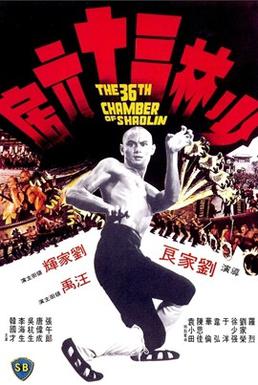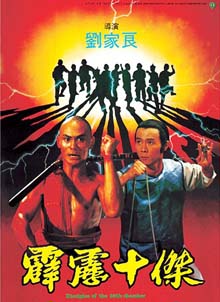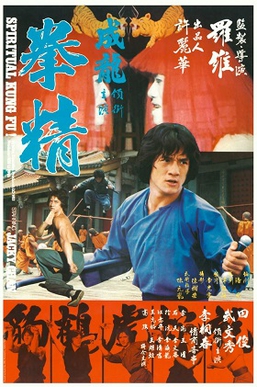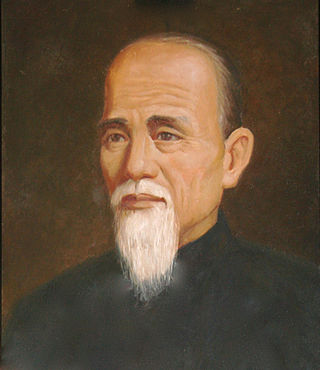Career
In the early 2000s Zhang Li began in documentaries about Shaolin, Shaolin Ulysses: Kung Fu Monks in America, where he explains his background of Shaolin and his life in America.
2006 Zhang Li made his acting debut in an American horror thriller movie Tooth Fairy.
2010 Zhang Li made his directing debut in the martial art drama Last Kung Fu Monk where he also played the leading role of the Shaolin Monk Li Long. A story of a Shaolin Monk who travels to New York but ends up in trouble with the Mafia.
2011 Zhang Li acted and directed his second movie The Resistance , a WWII drama mix with Ninja action and Zorro adventure. The movie entered Cannes Film Festival 17 May 2012 and became a Top DVD seller for 3 months in 2013.
Peng Zhang Li continued working with movies during 2012 and 2013, including a similar movie to Last Kung Fu Monk named The Man From Shaolin, and Zhang Li made a name for himself in the industry as the man from Shaolin to Kung Fu Master to actor and director.

In general, kung fu refers to the Chinese martial arts also called quanfa. In China, it refers to any study, learning, or practice that requires patience, energy, and time to complete. In its original meaning, kung fu can refer to any discipline or skill achieved through hard work and practice, not necessarily martial arts. The literal equivalent of "Chinese martial art" in Mandarin would be 中國武術 zhōngguó wǔshù.

Shaolin kung fu, also called Shaolin Wushu, or Shaolin quan, is the largest and most famous style of kung fu. It combines Chan philosophy and martial arts. It was developed in the Shaolin Temple in Henan, China during its 1500-year history. In Chinese folklore there is a saying, "Shaolin kung fu is the best under heaven," which indicates its superiority among martial arts, and "All martial arts under heaven originated from Shaolin," which indicates its influence on other martial arts. The name Shaolin is also used as a brand for the external styles of kung fu. Many styles in southern and northern China use the name Shaolin.

Fong Sai-yuk is a semi-fictional Chinese martial artist and folk hero from Zhaoqing City, Guangdong Province of the Qing dynasty. Fong was also associated with Hung Hei-gun and the Five Elders of the Southern Shaolin Monastery. He was a disciple of Shaolin and his martial arts techniques were considered to have contributed to the development of Hung Ga Kuen.

Chinese martial arts, commonly referred to with umbrella terms kung fu, kuoshu or wushu, are multiple fighting styles that have developed over the centuries in Greater China. These fighting styles are often classified according to common traits, identified as "families" of martial arts. Examples of such traits include Shaolinquan (少林拳) physical exercises involving All Other Animals (五形) mimicry or training methods inspired by Old Chinese philosophies, religions and legends. Styles that focus on qi manipulation are called internal, while others that concentrate on improving muscle and cardiovascular fitness are called external. Geographical associations, as in northern and southern, is another popular classification method.

The 36th Chamber of Shaolin is a 1978 Hong Kong kung fu film directed by Lau Kar-leung and produced by Shaw Brothers, starring Gordon Liu. The film follows a highly fictionalized version of San Te, a legendary Shaolin martial arts disciple who trained under the general Chi Shan.
Alexander Fu Sheng, also known as Fu Sing, was a Hong Kong martial arts actor. One of Hong Kong's most talented performers, Fu rose to prominence in the 1970s starring in a string of movies with the Shaw Brothers that accrued him international stardom throughout Asia and parts of North America.

Bak Mei is said to have been one of the legendary Five Elders—survivors of the destruction of the Shaolin Monastery by the Qing dynasty (1644–1912)—who, according to some accounts, betrayed Shaolin to the imperial government. He shares his name with the South Chinese martial art attributed to him.
Gordon Liu ; born Sin Kam-hei is a Chinese actor and martial artist best known for his martial arts films.

Disciples of the 36th Chamber is a 1985 Shaw Brothers Studio Hong Kong martial arts film comedy written, directed and choreographed Lau Kar-leung. It is the third in a loose trilogy of films that began with The 36th Chamber of Shaolin (1978) and was followed by Return to the 36th Chamber (1980). In Disciples, the action is focused on Hsiao Ho, who portrays legendary martial artist Fong Sai-Yuk. Gordon Liu, a constant in the 36th Chamber series, reprises his role from The 36th Chamber of Shaolin as the monk San Te.

The Shaolin Temple (少林寺) is a 1982 Chinese–Hong Kong martial arts film directed by Chang Hsin Yen and starring Jet Li in his debut role along with Ding Lan and Yu Hai in supporting roles. The film is based on the Shaolin Monastery in China and depicts Shaolin Kung Fu. The film was among the first major co-productions between Hong Kong and mainland China, and the first to be filmed in mainland China with a mostly mainland cast. The film's plot has an episodic storytelling structure while combining action, comedy and romance elements.

Spiritual Kung Fu is a 1978 Hong Kong martial arts comedy film directed and produced by Lo Wei. The film stars Jackie Chan, James Tien, and Dean Shek. The film features Yuen Biao as one of the Master of the Five Fists martial arts, and Chan was also the film's stunt co-ordinator. The film was also known in some other dubbed language releases as Karate Ghostbuster.
Xing Yu, also known as Shi Xingyu or Shi Yanneng is a Chinese martial artist and actor, who was one of the 32nd generation Shaolin monks.

Chan Heung was the founder of the Choy Li Fut martial arts system.

Shi Yan Ming is a 34th generation Shaolin warrior monk, teacher and actor, best known as the founder of the USA Shaolin Temple. Trained at the Shaolin Temple in Henan, People's Republic of China (PRC) since the age of five, Shi Yan Ming came to the United States in 1992, before opening the USA Shaolin Temple in Manhattan, where he has taught hundreds of students, including numerous celebrities. He has made various media appearances in television, film and print, including National Geographic, PBS, History, Time magazine, and the 1999 American samurai action film, Ghost Dog: The Way of the Samurai.
Carter Wong is a Hong Kong actor and martial artist, who is mainly known for roles in Kung Fu action movies. The biggest movies he was featured in are Big Trouble in Little China (1986), and Yong zheng ming zhang Shao Lin men (1977). As an actor, he contributed to more than seventy martial arts films. He also worked as a stuntman in films, and was the fighting instructor for the movie Rambo III. Wong is still active in martial arts.
Eagle Han-ying, Korean name Kim Young Il (김영일) was a South Korean actor and martial artist, who rose his fame in South Korea through various Korean drama series from the 90. Outside of Korea, he is best known with his appearance with many kung fu films from the range of Korean, Hong Kong and Taiwanese production.

Last Kung Fu Monk is a Chinese martial art drama from 2010 that was filmed and co worked with both China and United States. The movie is the debut directing by Peng Zhang Li, and the story is inspired by his own life as a monk and his new life in a foreign land.

Johan Karlberg is a Macanese actor, born 1984 in Sweden, then became an actor in China during the 2010s and later moved to Macau to continue his acting career in Asia. He is known from Last Kung Fu Monk, The Resistance, Marriage Cuisine, The Edge Of Human, and Return To Earth - Macau Sci-fi (2023).

Drunken boxing also known as Drunken Fist, is a general name for various styles of Chinese martial arts that imitate the movements of a drunk person. It is an ancient style and its origins are mainly traced back to the Buddhist and Daoist religious communities. The Buddhist style is related to the Shaolin temple while the Daoist style is based on the Daoist tale of the drunken Eight Immortals. Zui quan has the most unusual body movements among all styles of Chinese martial arts. Hitting, grappling, locking, dodging, feinting, ground and aerial fighting and all other sophisticated methods of combat are incorporated.

Kung Fu Elliot is a 2014 Canadian film co-directed by Matthew Bauckman and Jaret Belliveau, reportedly a documentary, concerning the attempt of Elliot "White Lighting" Scott to become "Canada's first action star".











